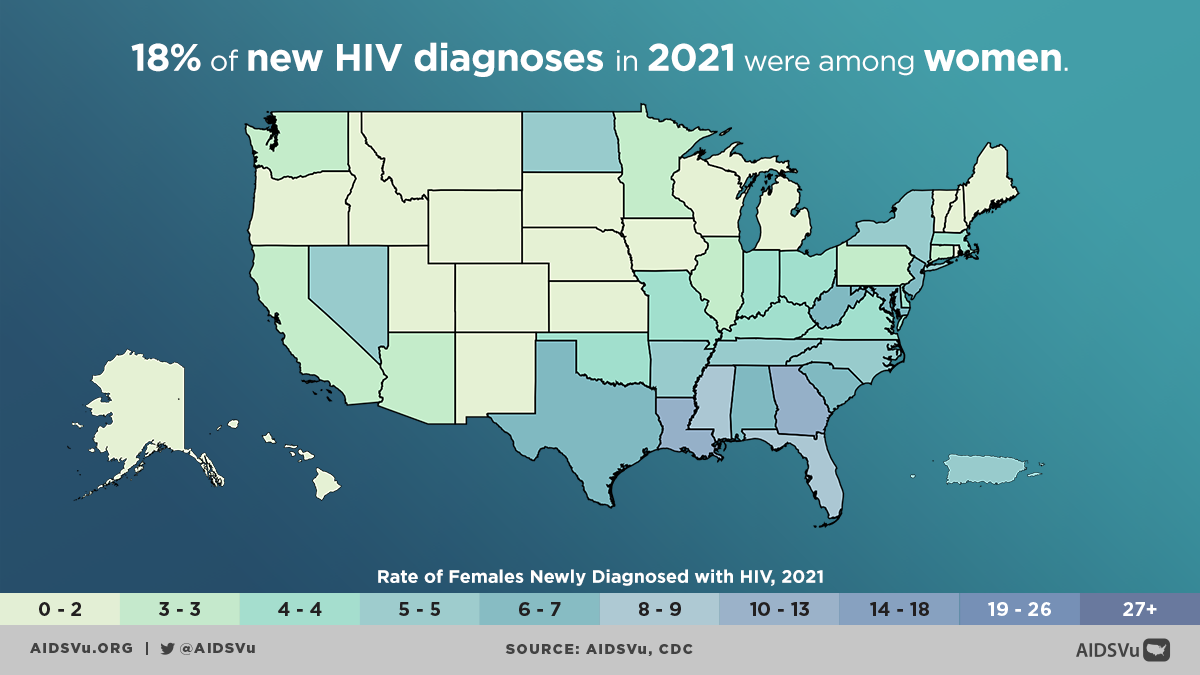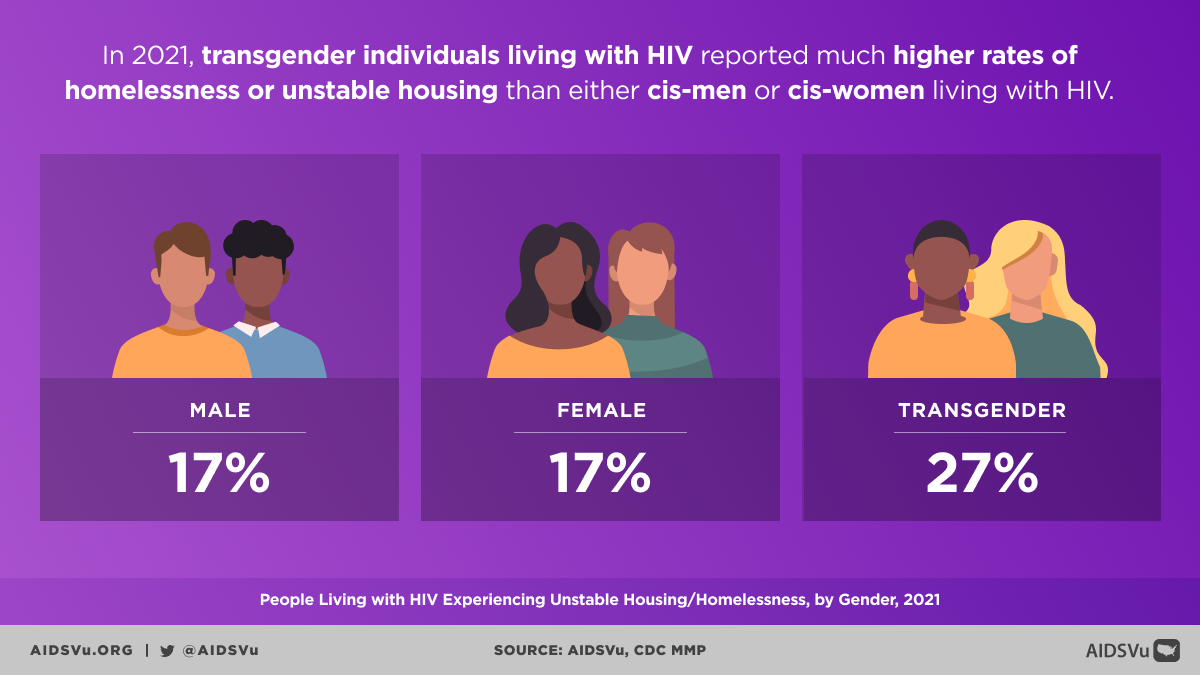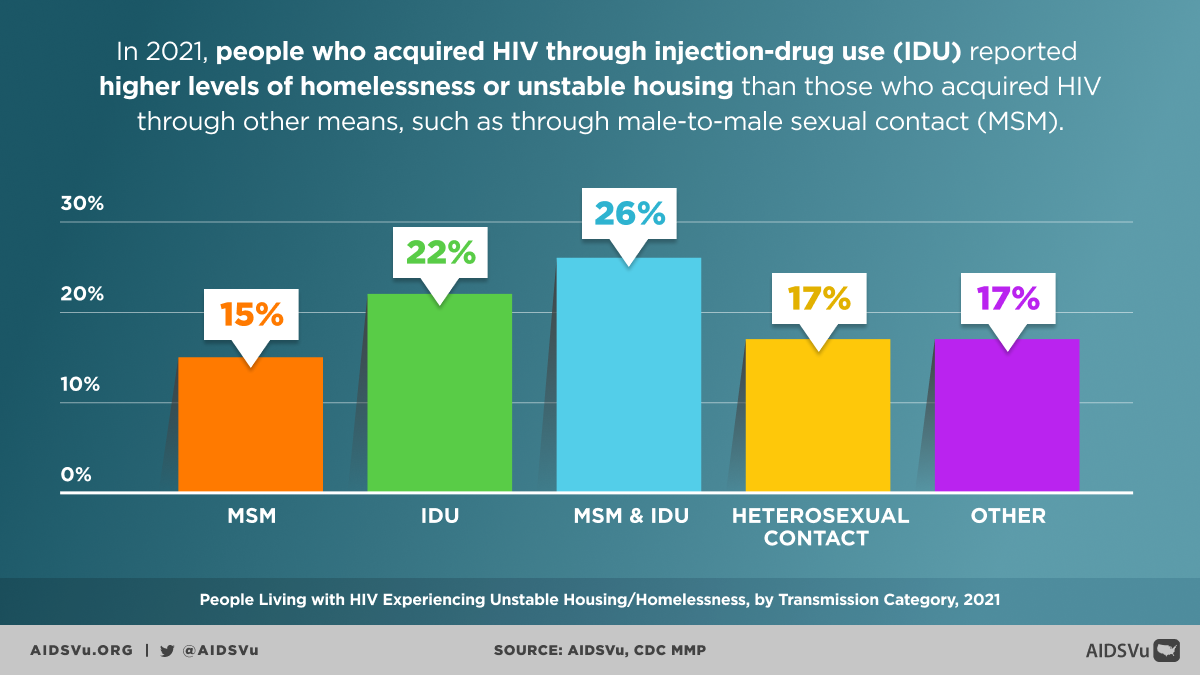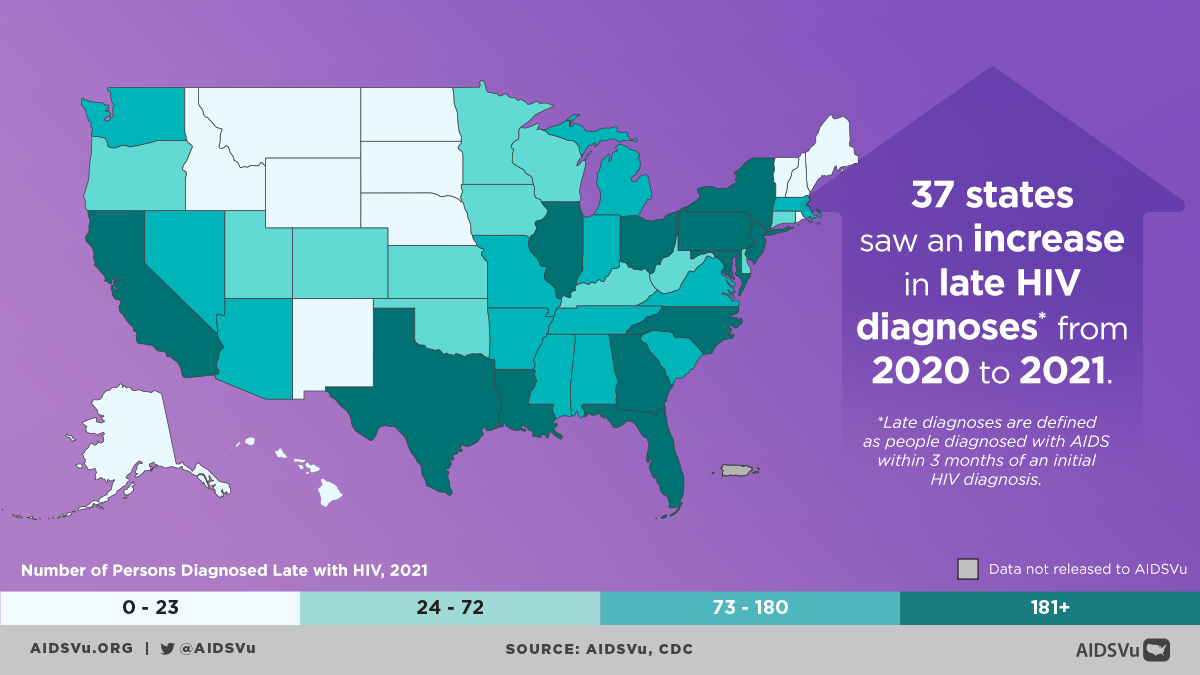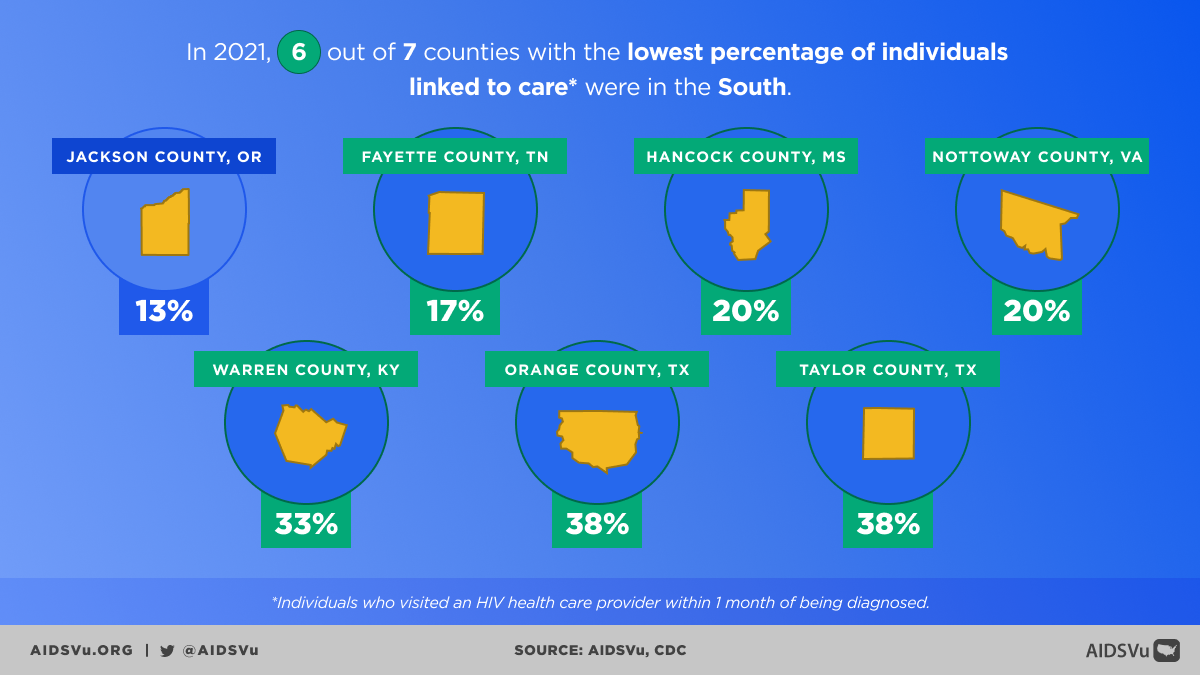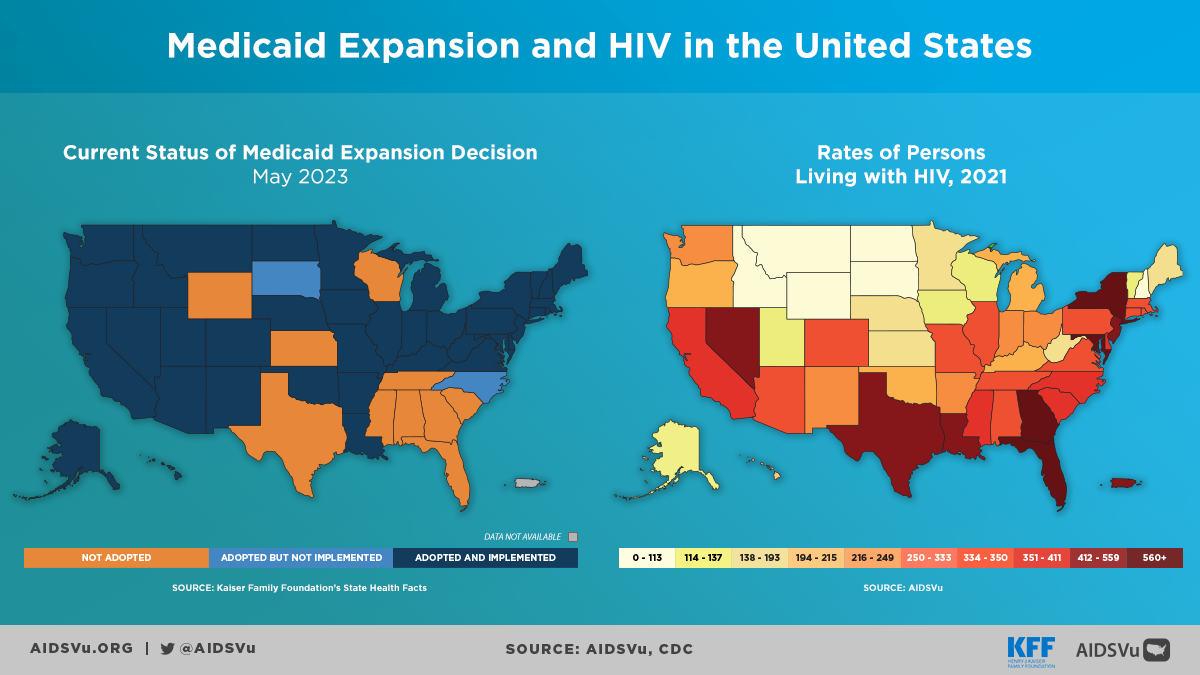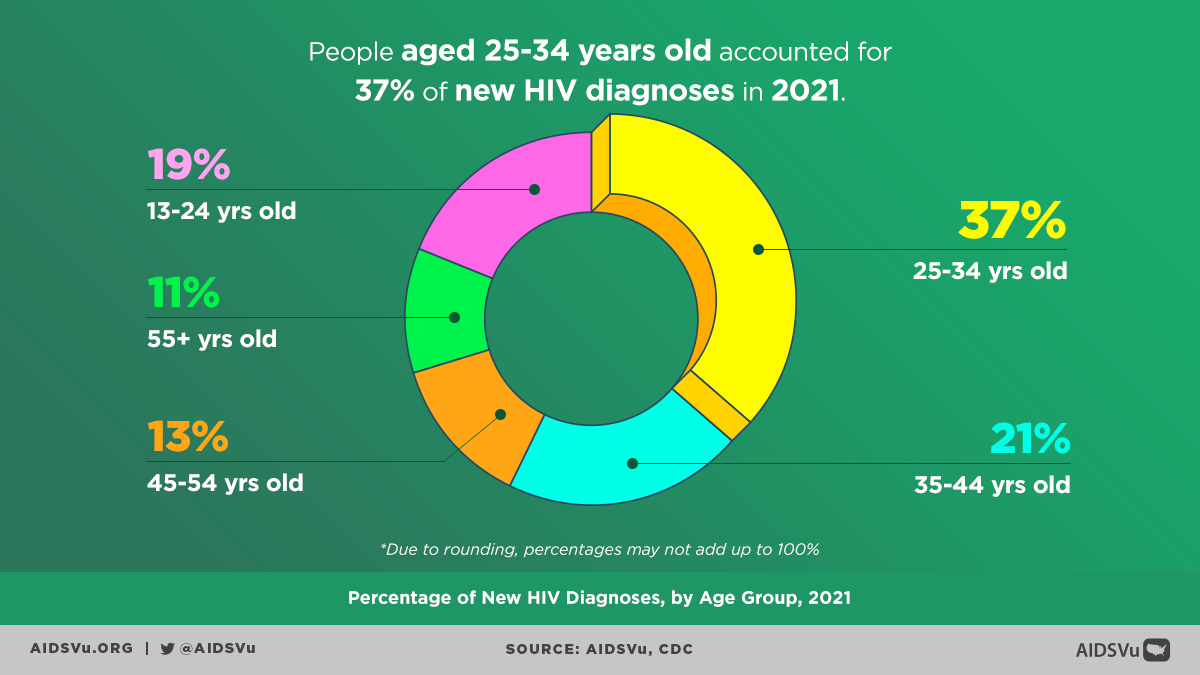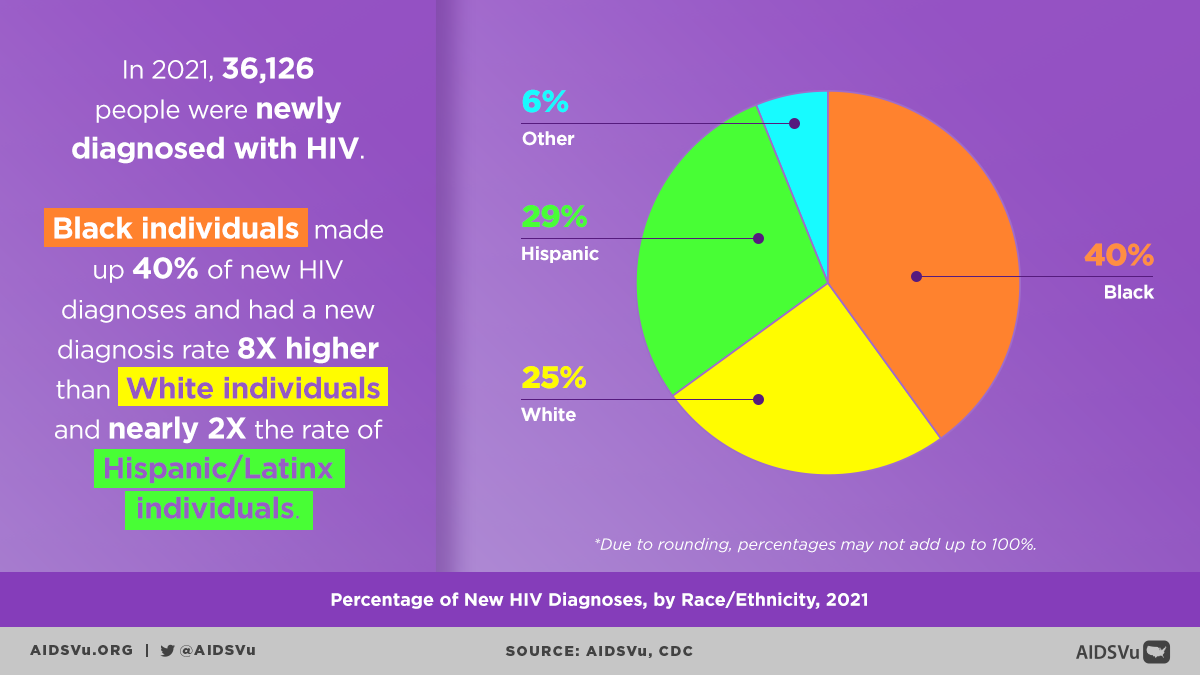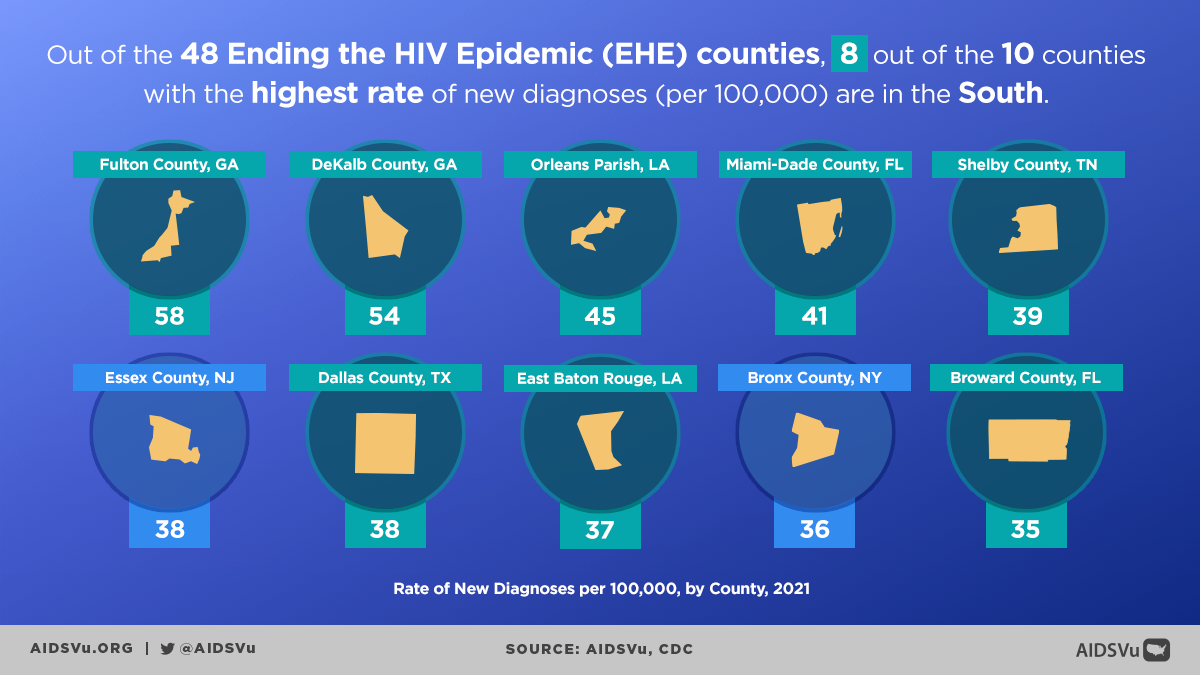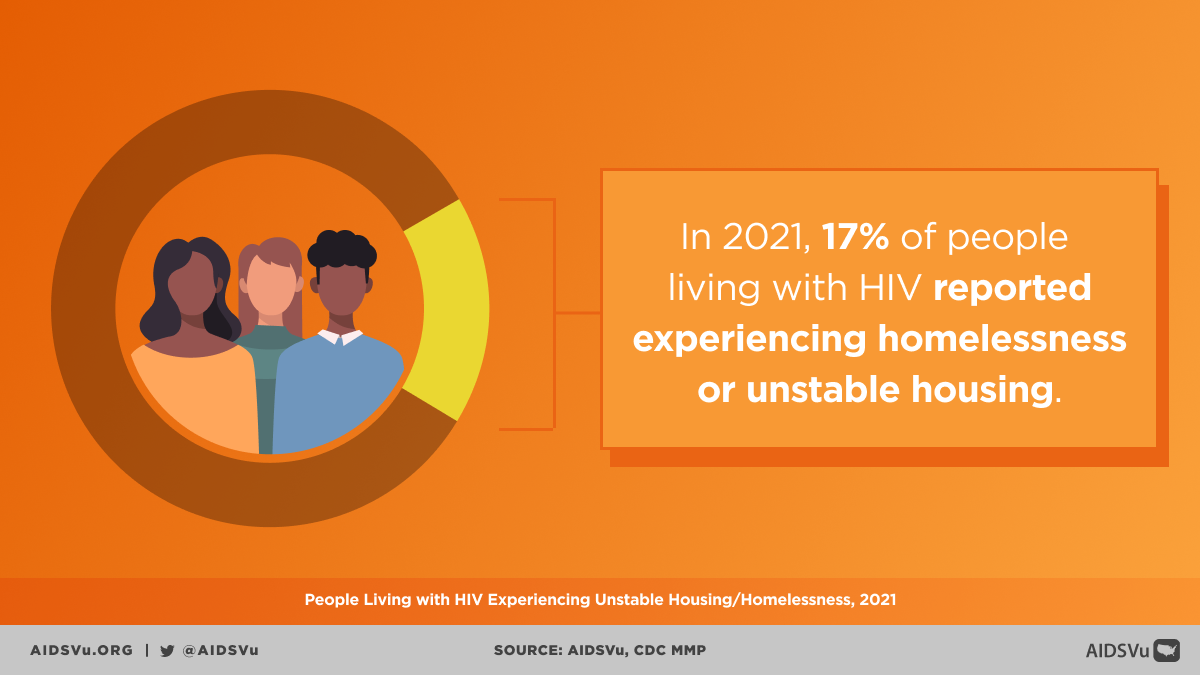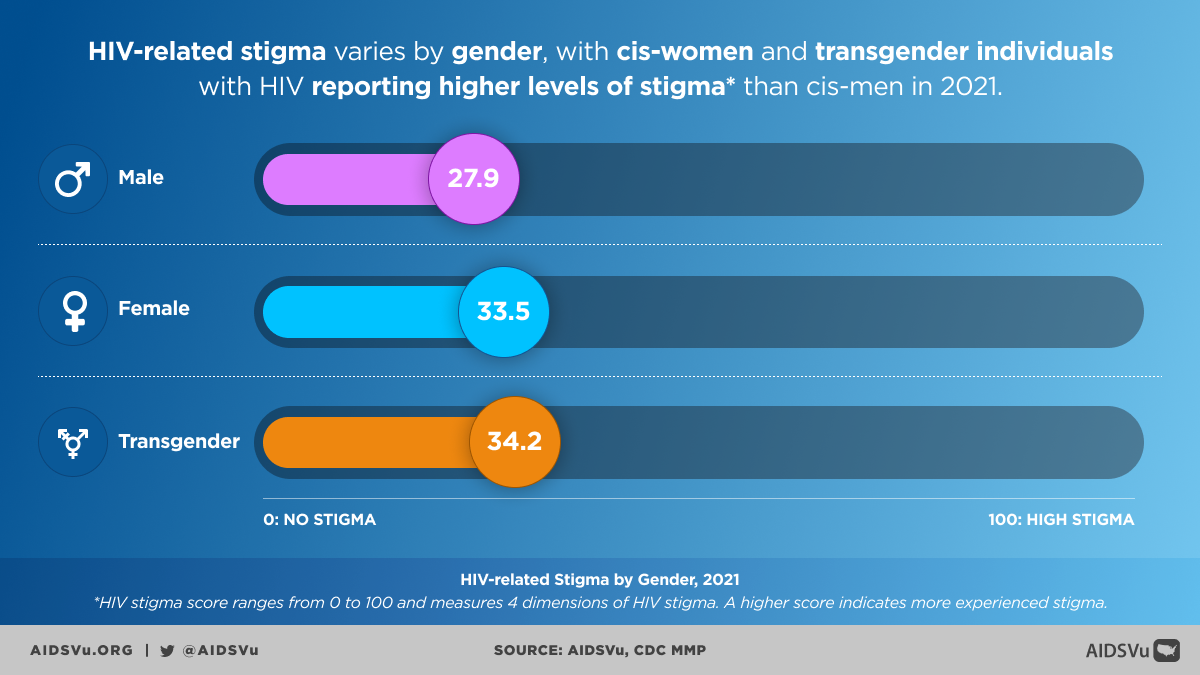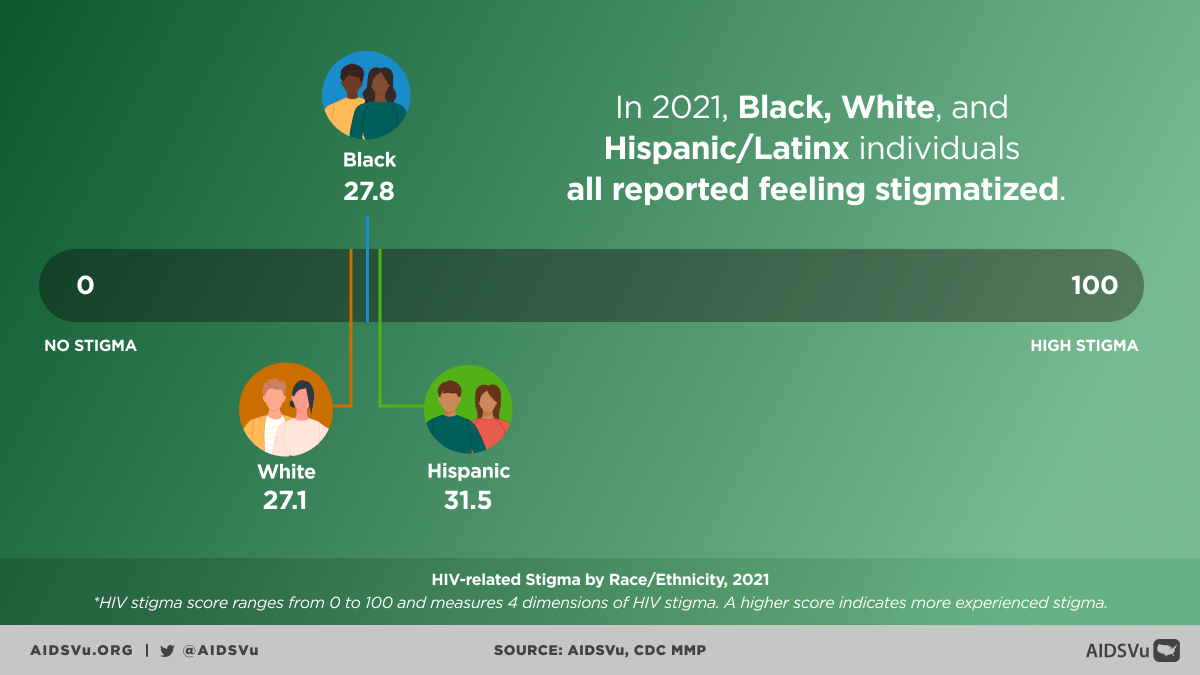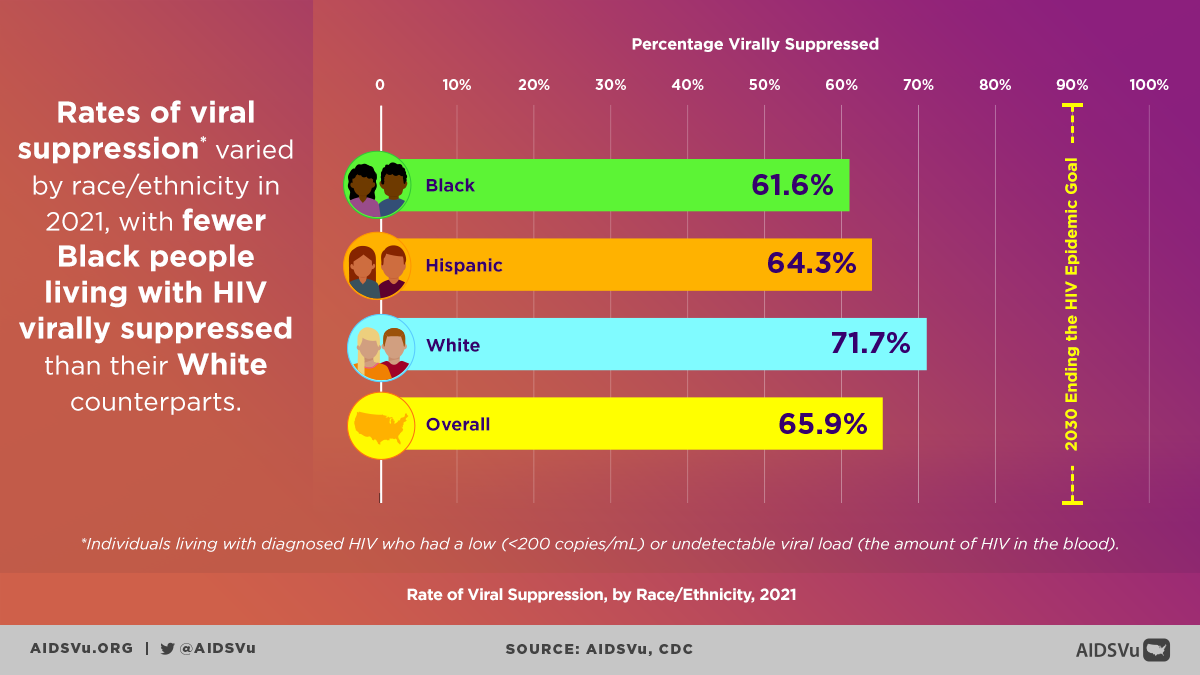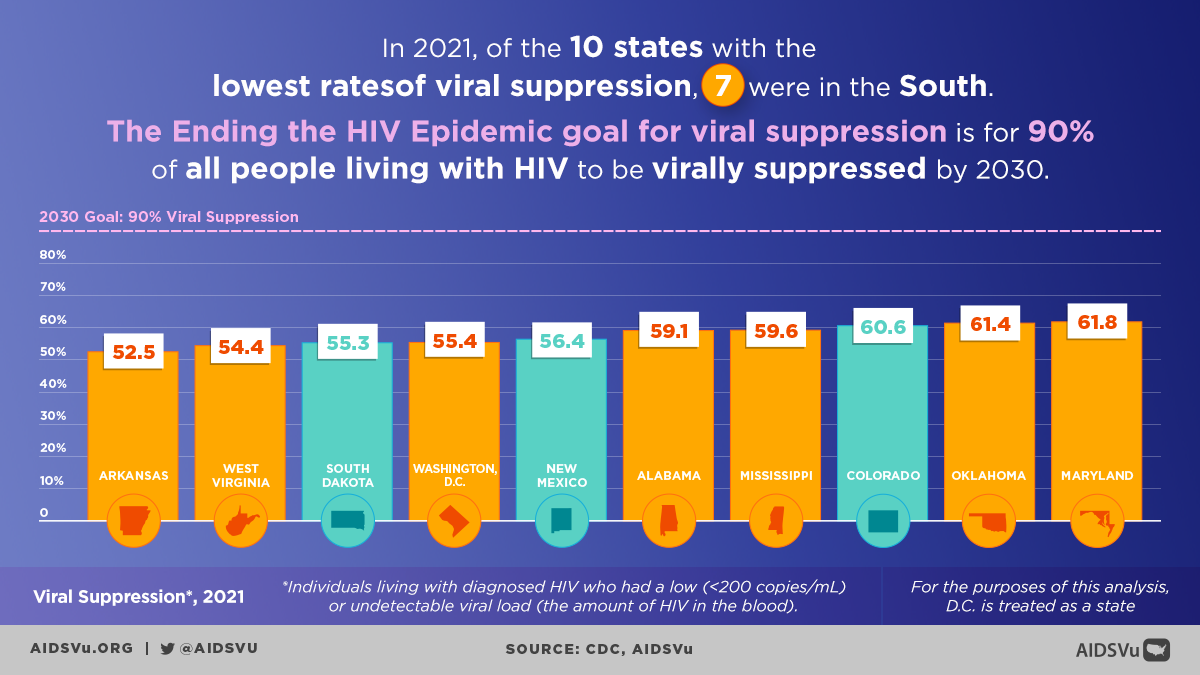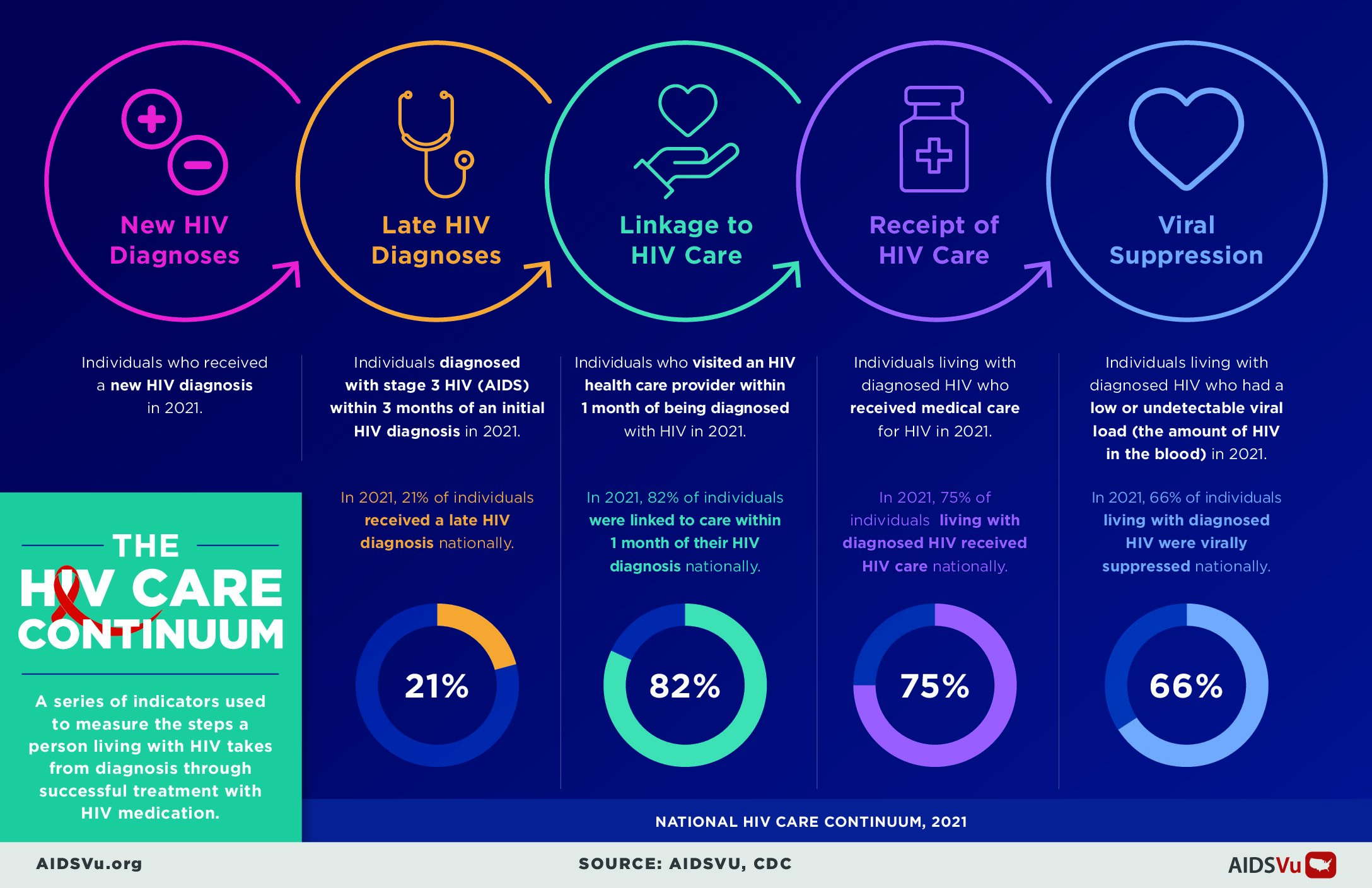Also released: new local data indicators tracking homelessness/unstable housing and HIV-related stigma.
ATLANTA, GA – Today, AIDSVu released interactive maps and data that visualize the HIV epidemic at the state– and county– levels for 2021. In addition to state and county levels, these data can also be viewed across different demographic groups such as age, sex, and race/ethnicity as well as different social determinants of health including poverty, income inequality, and lack of health insurance.
This year, AIDSVu partnered with Centers for Disease Control and Prevention’s Medical Monitoring Project (CDC MMP) to include new data on our local profiles for people experiencing homelessness/unstable housing and HIV-related stigma. These new data highlight the impact of HIV on individual quality of life and are key indicators in the National HIV/AIDS Strategy for the United States (NHAS), which aims to reduce both stigma and homelessness among people living with HIV by 50% by 2025.
“AIDSVu’s goal is to show the current state of the HIV epidemic in a clear and accessible format. Our annual updates to our state- and county-level maps are an opportunity for us to draw attention to new trends in the epidemic and call attention to health inequities” said Patrick Sullivan, DVM, PhD, Professor of Epidemiology at Emory University’s Rollins School of Public Health and Principal Scientist for AIDSVu. “This year, that includes the addition of these CDC data on homelessness and HIV-related stigma among people living with HIV, which shows that people with HIV disproportionately experience stigma and housing challenges related to their status. As we work to improve the lives of people who are currently living with HIV and fight to end this epidemic, it’s critical we look at HIV’s impact on all communities—particularly historically under-served communities.”
In addition to mapping HIV prevalence and new HIV diagnoses, AIDSVu also collects data on the HIV care continuum, a public health model that outlines the steps that people living with HIV go through from diagnosis to achieving and maintaining viral suppression. This year, AIDSVu has also added county-level HIV care continuum maps for the first time for linkage to care, receipt of care, and viral suppression.
These maps highlight the continued disparities in access to treatment and care across different geographies and illustrate that there is still much work to be done to reach our shared goal of ending the HIV epidemic.
Data Highlights:
- 36,126 people were newly diagnosed with HIV in 2021. Black individuals made up 40% of new HIV diagnoses—and had a new diagnosis rate that was 8 times higher than White individuals.
- In 2021, 17% of people living with HIV reported experiencing homelessness or unstable housing.
- In 2021, transgender individuals living with HIV reported much higher rates of homelessness or unstable housing than either cis-male or cis-women living with HIV.
- In 2021, Black, White, and Hispanic/Latinx individuals living with HIV all reported feeling stigmatized.
- HIV-related stigma varies by gender, with women and transgender individuals with HIV reporting higher levels of stigma than men in 2021.
- Out of the 48 Ending the HIV Epidemic (EHE) counties, 8 out of the 10 counties with the highest rate of new diagnoses are in the South.
About AIDSVu’s Annual Data Update:
AIDSVu is presented by Emory University’s Rollins School of Public Health in partnership with Gilead Sciences, Inc. and the Center for AIDS Research at Emory University (CFAR). Now in its thirteenth year, AIDSVu continues to advance its mission to make HIV data widely available, easily accessible, and locally relevant to inform public health decision-making and action. The site aims to provide researchers, policymakers, and community members with a more comprehensive understanding of the HIV epidemic at the local-, state-, and national- level.
State- and county-level data displayed on AIDSVu were obtained from the CDC and compiled by researchers at the Rollins School of Public Health. ZIP Code, census tract, and community area/ward data were provided by state and city health departments and compiled by researchers at the Rollins School of Public Health. Learn more about AIDSVu’s HIV care continuum data and sources, see our FAQ and Data Methods.
The release of HIV Unstable Housing or Homelessness and HIV Stigma Data was made possible through a collaboration with the Centers for Disease Control and Prevention’s Medical Monitoring Project (MMP). Please see CDC’s AtlasPlus for additional details and to download the datasets.
AIDSVu’s Recent Updates:
AIDSVu recently released a first-of-its-kind public Faith Based Organization (FBO) Service Locator, developed by Dr. Allison Mathews, Executive Director of the COMPASS Initiative Faith Coordinating Center at Wake Forest University. The service locator allows individuals to find HIV-related services offered by FBOs in their area. In addition to creating the locator, Dr. Mathews and the COMPASS Initiative Faith Coordinating Center also conducted a survey of FBOs and their HIV programming in order to better understand the role faith communities play in HIV prevention, testing, and care.
Earlier this summer, AIDSVu published updated PrEP use data and maps by race/ethnicity at the state-level for 2022, revealing the importance of looking at PrEP use through a health equity lens. The PrEP use data available on AIDSVu can help inform policies and programs to ensure that communities that are disproportionately impacted by HIV are aware of and able to access PrEP.

